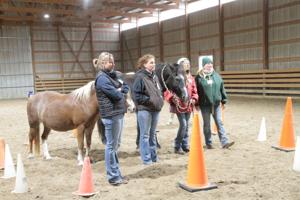A group of seniors at Brainerd High School has expressed significant concerns regarding a recent survey aimed at determining funding priorities within the school district. The students, representing various disciplines and interests, found the integrity of the survey troubling, suggesting it may undermine the district’s ability to maintain a balanced approach to educational priorities.
The survey prompted students to rank various programs and initiatives, implying that those ranked lowest would receive less funding. This approach, according to the students, poses a serious risk to the school system’s commitment to a diverse and comprehensive education. They argue that a school district can effectively address multiple priorities, and the notion that some programs could be deprioritized is alarming.
The students highlighted the importance of various offerings, including arts programs, advanced placement (AP) classes, extracurricular activities, and sports. They emphasized that maintaining safe facilities should be a non-negotiable priority, as every student deserves to learn in a secure environment.
Paul Sandberg, one of the senior students involved, questioned the survey’s purpose, stating that it seems to bias respondents toward funding decisions based on rankings. For example, concerns about reducing funding for maintenance and safety are likely to resonate more strongly among respondents than potential cuts to transportation services. This inconsistency could lead to an inaccurate representation of community priorities, especially in a region where transportation plays a critical role in student access.
The students are particularly worried about the implications for the Brainerd school system, which has been recognized for its commitment to quality education in rural Minnesota. For decades, the district has demonstrated that geographic limitations do not restrict educational excellence; however, this requires adequate funding. The students argue that investment in education yields significant returns, benefiting the entire community.
As the discussion around funding priorities continues, the students have called for a reconsideration of the survey’s format and implications. Their collective voice reflects a desire for transparency and fairness in how the school district allocates its resources.
The concerns raised by these seniors highlight the importance of inclusive dialogue around educational funding, ensuring that the diverse needs of students are met. The outcome of this survey and its impact on the Brainerd High School community will be closely monitored by students and educators alike.







